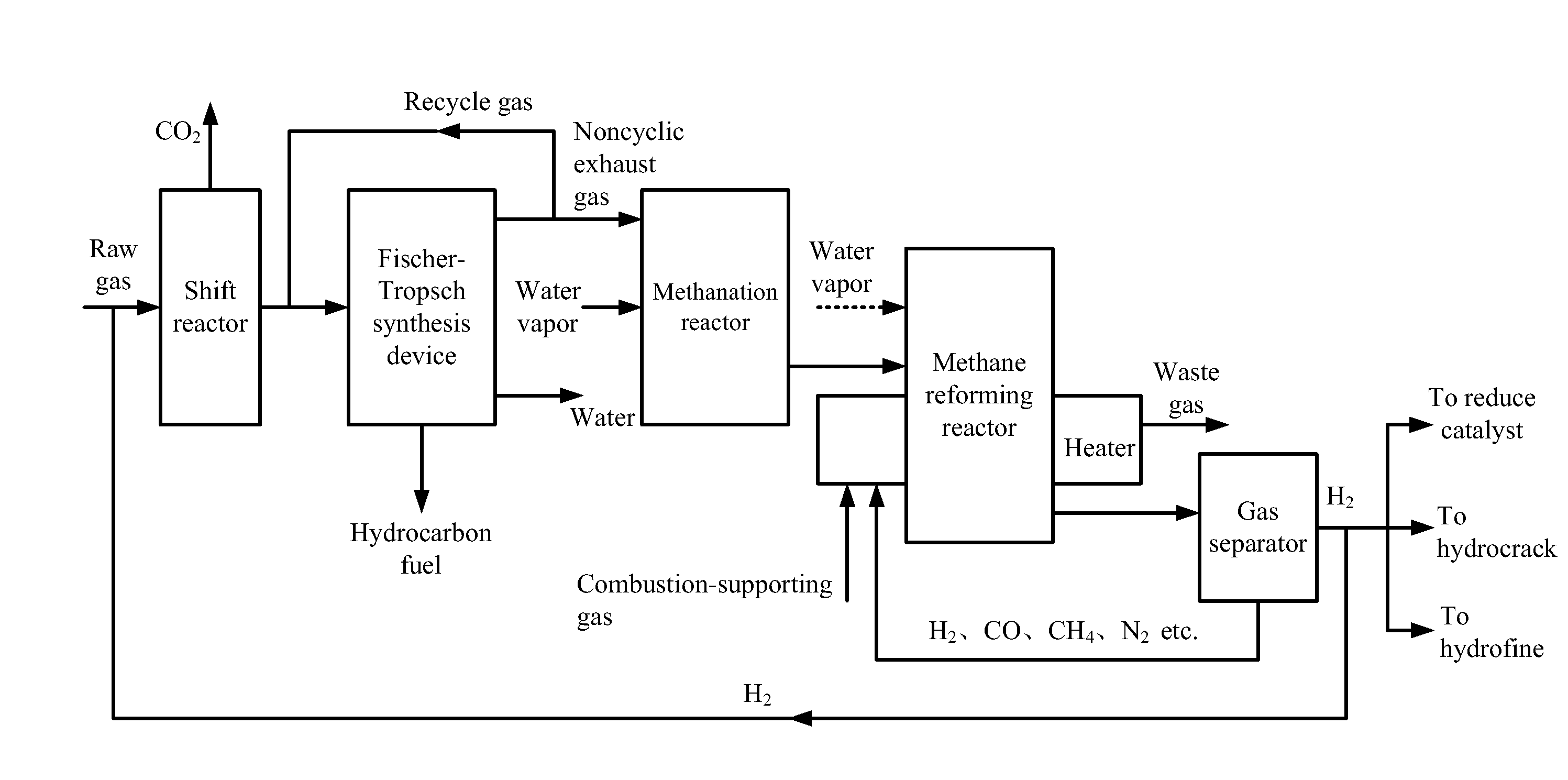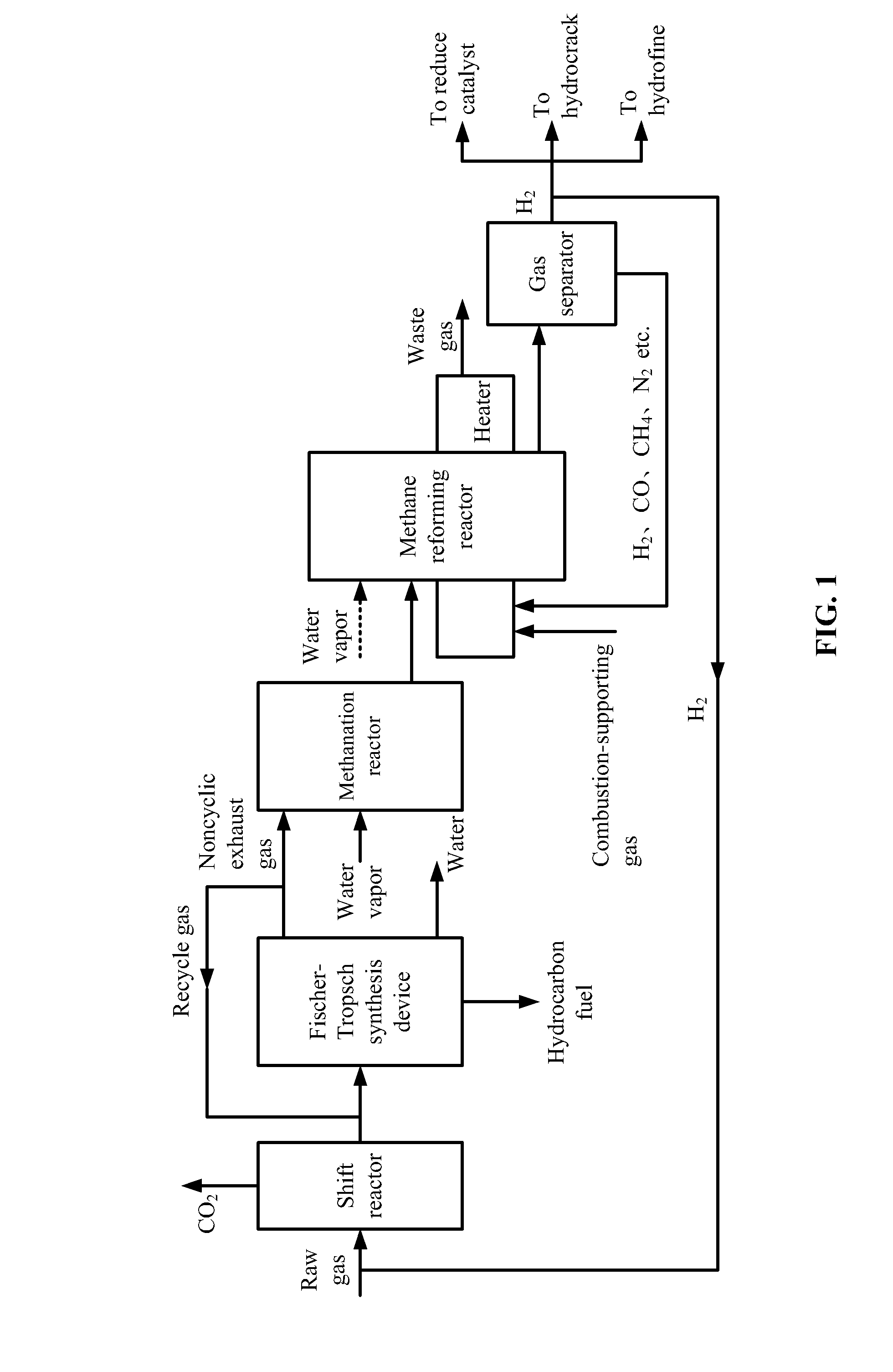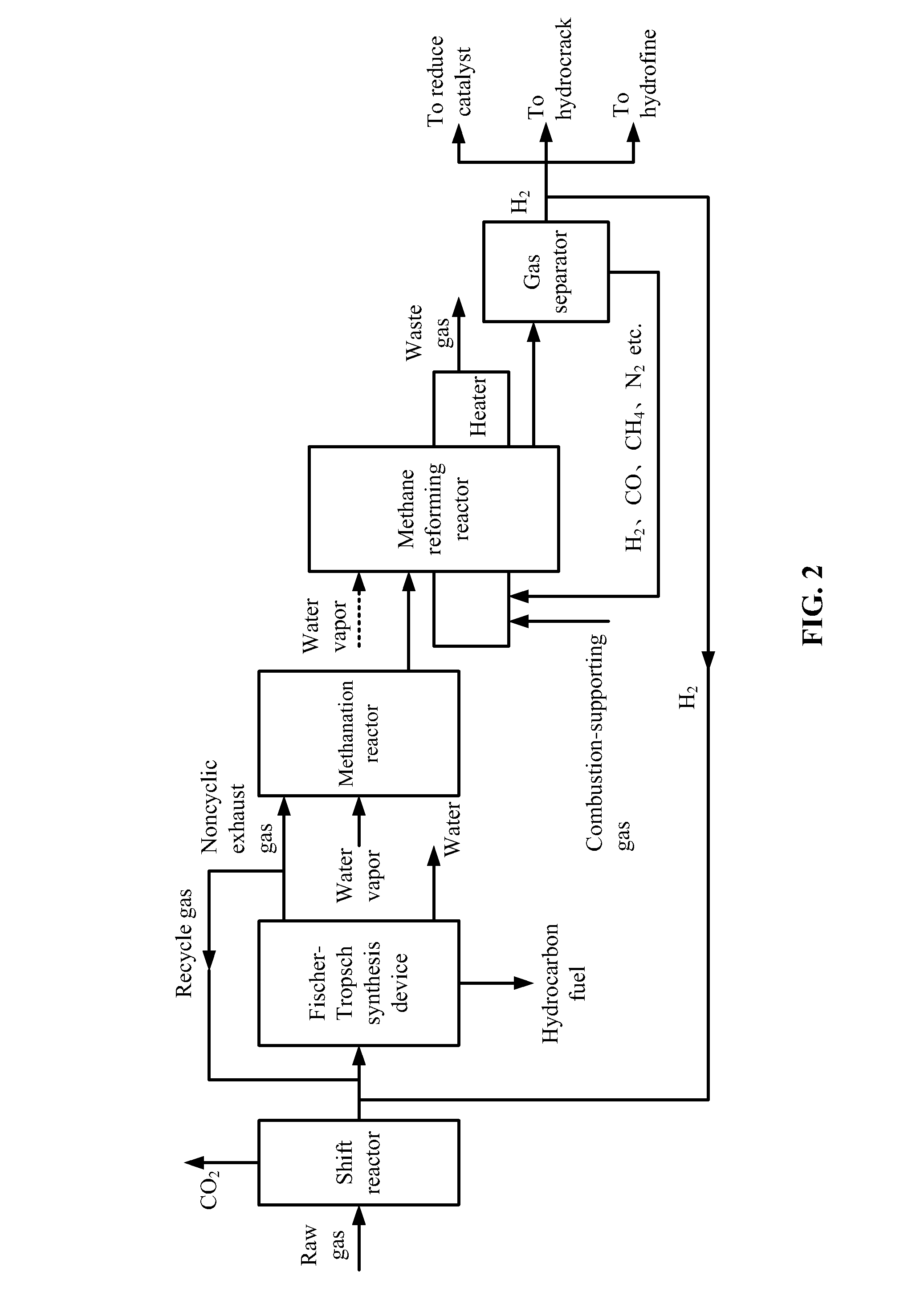Method for recycling exhaust gases from fischer-tropsch synthesis
- Summary
- Abstract
- Description
- Claims
- Application Information
AI Technical Summary
Benefits of technology
Problems solved by technology
Method used
Image
Examples
example 1
[0043]Raw gas involved in this example is the same as that in Comparison example, and the produced hydrogen is transported back to the shift reactor according to the flow chart in FIG. 1.
[0044]1) The raw gas was from the gasification of coal or biomass and comprised hydrogen and carbon monoxide with a molar ratio thereof of 0.1. The raw gas was introduced to a shift reactor at the flow rate of 5890 NM3 / h. A water-gas shift reaction between the hydrogen and the carbon monoxide was conducted at the temperature of 300° C. and the pressure of 2.0 MPa to yield hydrogen and carbon dioxide. After the reaction, 2120 NM3 / h of carbon monoxide was transformed into carbon dioxide, together with the generation of the same volume of hydrogen. Carbon dioxide was removed, and 4480 NM3 / h of shift gas was obtained. The molar ratio of hydrogen to carbon monoxide in the shift gas was 1.7, and the shift gas comprises more than 88% (v / v) of active components.
[0045]2) The shift gas was mixed with 715 NM3 / ...
example 2
[0052]The treatment method of the exhaust gas in this example is the same as that in Example 1, and the produced hydrogen is transported back to the shift reactor according to the flow chart in FIG. 1.
[0053]1) The raw gas was from the gasification of coal or biomass and comprised hydrogen and carbon monoxide with a molar ratio thereof of 1.1. The raw gas was introduced to a shift reactor at the flow rate of 5950 NM3 / h. A water-gas shift reaction between the hydrogen and the carbon monoxide was conducted at the temperature of 200° C. and the pressure of 1.0 MPa to yield hydrogen and carbon dioxide. After the reaction, 256 NM3 / h of carbon monoxide was transformed into carbon dioxide, together with the generation of the same volume of hydrogen. Carbon dioxide was removed, and 4530 NM3 / h of shift gas was obtained. The molar ratio of hydrogen to carbon monoxide in the shift gas was 1.43, and the shift gas comprises more than 88% (v / v) of active components.
[0054]2) The shift gas was mixed...
example 3
[0061]Raw gas involved in this example is listed in Table 4, and the produced hydrogen is transported back to the Fischer-Tropsch synthesis device according to the flow chart in FIG. 2.
[0062]1) The raw gas was from the gasification of coal or biomass and comprised hydrogen and carbon monoxide with a molar ratio thereof of 2.2. The raw gas was introduced to a shift reactor at the flow rate of 5900 NM3 / h. A water-gas shift reaction between the hydrogen and the carbon monoxide was conducted at the temperature of 500° C. and the pressure of 4.0 MPa to yield hydrogen and carbon dioxide. After the reaction, 300 NM3 / h of carbon monoxide was transformed into carbon dioxide, together with the generation of the same volume of hydrogen. Carbon dioxide was removed, and 5090 NM3 / h of shift gas was obtained. The molar ratio of hydrogen to carbon monoxide in the shift gas was 3.0, and the shift gas comprises more than 95% (v / v) of active components.
[0063]2) The shift gas was mixed with 100 NM3 / h o...
PUM
| Property | Measurement | Unit |
|---|---|---|
| Temperature | aaaaa | aaaaa |
| Temperature | aaaaa | aaaaa |
| Temperature | aaaaa | aaaaa |
Abstract
Description
Claims
Application Information
 Login to View More
Login to View More - R&D
- Intellectual Property
- Life Sciences
- Materials
- Tech Scout
- Unparalleled Data Quality
- Higher Quality Content
- 60% Fewer Hallucinations
Browse by: Latest US Patents, China's latest patents, Technical Efficacy Thesaurus, Application Domain, Technology Topic, Popular Technical Reports.
© 2025 PatSnap. All rights reserved.Legal|Privacy policy|Modern Slavery Act Transparency Statement|Sitemap|About US| Contact US: help@patsnap.com



